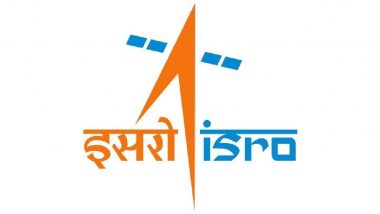New Delhi, May 11: India’s border surveillance capabilities and national security are poised to get a game-changing boost with the launch of the all-weather Indian Space Research Organisation’s RISAT-1B radar imaging satellite, also known as EOS-09, from the Sriharikota space centre on May 18.
The RISAT-1B satellite is equipped with a state-of-the-art C-band synthetic aperture radar, which will enable it to capture high-resolution images of the Earth’s surface under adverse weather conditions such as rain, fog, clouds, or at night. This is quite unlike optical camera satellites that struggle to record images when the weather turns bad or darkness sets in at night. Prime Minister Narendra Modi Recalls 1998 Pokhran Nuclear Tests, Hails Indian Scientific Community on National Technology Day.
According to experts, coming just days after Operation Sindoor, RISAT-1B’s launch assumes great significance as it will give the defence forces a vital edge in monitoring India’s sensitive borders along Pakistan and China, as well as for safeguarding the country’s vast coastlines. RISAT-1B’s radar technology is particularly crucial for defence purposes. It can track enemy movements, detect infiltrations, and support anti-terrorism operations, providing continuous, reliable intelligence.
The high-resolution radar images can detect even minor changes, such as fresh soil disturbances due to the movement of military equipment, new encampments, or vehicular movement, which conventional surveillance might miss. The RISAT-1B is an advanced version of the existing RISAT series of satellites that have been used in operations such as the Balakot strikes.
RISAT-1B can play a key role in anti-terrorist operations as it can more accurately pick up suspicious movements on the ground as terrorists try to infiltrate across the border. The satellite features five distinct imaging modes, ranging from ultra-high-resolution imaging, capable of detecting small objects, to broader scans for large-area observation. This wide range provides flexibility in using the satellite for both military and civilian applications such as agriculture, forestry, soil moisture monitoring, geology and keeping track of floods. Pokhran II Anniversary-National Technology Day 2025: Rajnath Singh Recalls India’s Nuclear Test in Pokhran in 1998; Hails Contribution of Scientists, Engineers and Technicians.
The RISAT-1B is a further advancement of the RISAT-1 satellite and is similar in configuration. It will also complement data from other satellites, such as the Resourcesat, Cartosat, and RISAT-2B Series, which will build a comprehensive Earth observation network.
(The above story first appeared on LatestLY on May 11, 2025 04:10 PM IST. For more news and updates on politics, world, sports, entertainment and lifestyle, log on to our website latestly.com).













 Quickly
Quickly












